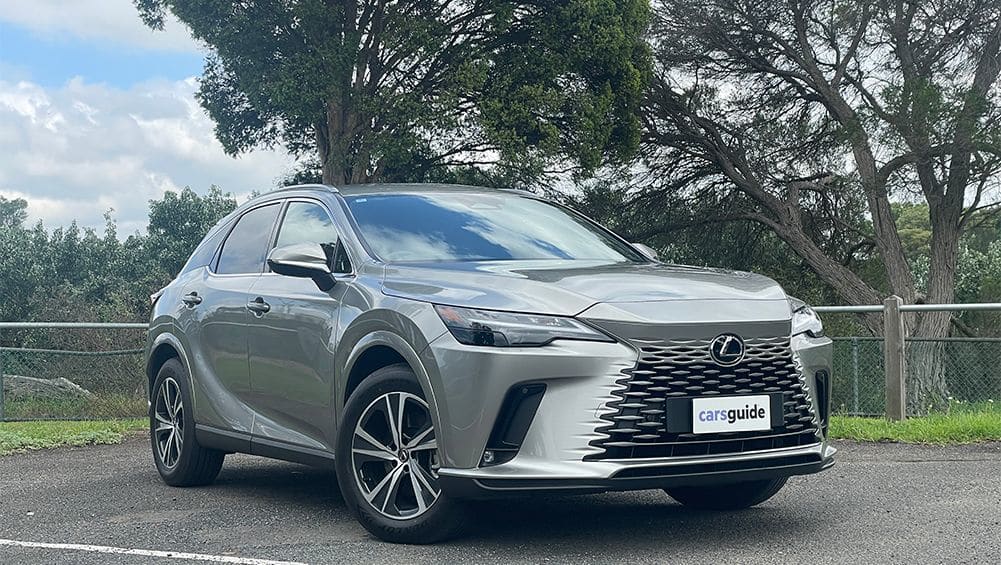Embarking on a cross-country road trip is a rite of passage for many travelers. Whether you’re navigating the sun-soaked stretches of Route 66, meandering along the Pacific Coast Highway, or exploring the heartland through I-70, the journey is as much about the experience as it is about the destination.
But while road trips evoke feelings of freedom and adventure, the success or failure of such an undertaking often hinges on one crucial factor: your vehicle. The right car can turn a cross-country drive into a stress-free, memorable adventure, while the wrong one can lead to discomfort, breakdowns, and unexpected detours that no GPS can correct.
Not every vehicle is built for this type of endurance. A cross-country drive isn’t just a matter of clocking miles on a highway. It’s a test of mechanical reliability, comfort under continuous use, fuel efficiency across hundreds (if not thousands) of miles, and the vehicle’s ability to adapt to diverse terrain and weather conditions.
Drivers may encounter everything from heavy urban traffic to remote mountain passes, desert heat, or icy rain, often all within the same journey. These variables put unique stress on every aspect of a vehicle, from its engine and transmission to its suspension and climate control systems.
That’s why choosing the right car for such a journey is more than a matter of style or preference. It’s a decision that can directly impact the ease, enjoyment, and safety of your trip. There are vehicles on the market known for their road trip readiness—ones that offer exceptional comfort, ample cargo space, stellar fuel economy, and, above all, unshakable reliability. These are the kinds of cars that make you feel confident leaving home for thousands of miles without dreading the mechanical unknown.
On the other hand, there are vehicles—some surprisingly expensive or stylish—that simply aren’t cut out for the challenge. Whether due to cramped interiors, frequent mechanical issues, poor highway performance, or limited parts availability, these cars can turn a dream trip into a logistical nightmare. What looks good in a showroom or handles great on city streets may fall apart, literally or figuratively, when pushed to the limits of a coast-to-coast adventure.
In this article, we’ll take a closer look at both sides of the spectrum. First, we’ll spotlight five vehicles that consistently prove themselves as top-tier choices for long-distance travel, thanks to their blend of comfort, efficiency, performance, and dependability.
Then, we’ll explore five cars that—despite their appeal in other settings—are best left behind when it’s time to hit the open road. Whether you’re planning your first big road trip or just curious about what cars rise to the occasion, this guide will help you separate the road warriors from the road-weary.
Also Read: 12 Worst GM Cars Ever Built and 10 of the Best
5 Cars That Can Handle a Cross-Country Drive
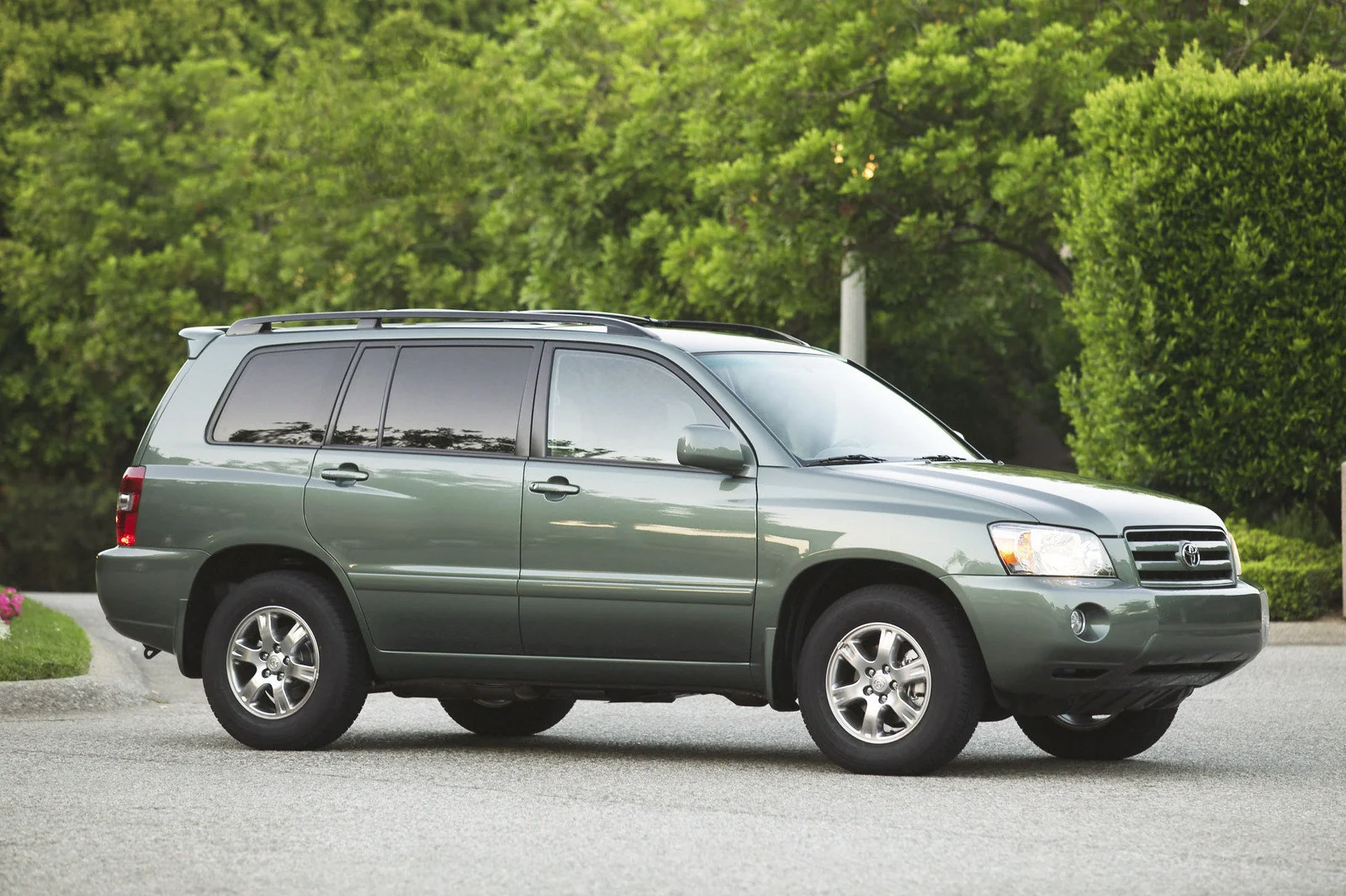
1. Toyota Highlander
The Toyota Highlander is a midsize SUV that expertly balances practicality and performance, making it a top contender for cross-country travel. One of the most significant advantages the Highlander offers is its versatile powertrain.
Most models come with a refined V6 engine that provides ample horsepower for merging, overtaking, or climbing steep inclines—common occurrences during long road trips.
There’s also a hybrid version available, which significantly improves fuel efficiency, a crucial benefit when you’re driving thousands of miles. The vehicle’s smooth, predictable handling makes it equally comfortable navigating city streets and long, straight highway stretches. It never feels bulky or cumbersome, even with a full load of passengers and luggage.
When it comes to cabin comfort, the Highlander excels. It provides a spacious interior that can comfortably seat up to eight passengers, making it a favorite for families or group travelers. The seats offer good back support and adjustability for long stints behind the wheel or in the passenger seat.
Even third-row passengers get a decent amount of legroom, which isn’t always the case with three-row SUVs. The ride quality is quiet and composed, thanks to excellent sound insulation and a well-tuned suspension system.
Features like tri-zone climate control, a panoramic sunroof, and a premium sound system elevate the driving experience, turning hours on the road into something far more enjoyable.
Durability is perhaps the Highlander’s strongest selling point. Toyota’s reputation for reliability isn’t just hype—it’s well-earned, and the Highlander exemplifies that dependability. Owners routinely report minimal mechanical issues even after the odometer crosses the 200,000-mile mark.
Maintenance costs are relatively low, parts are widely available across the country, and Toyota’s dealer network ensures that even in remote areas, help is usually within reach.
For anyone planning a coast-to-coast journey, especially one that includes remote terrain or varying weather conditions, the Toyota Highlander offers peace of mind wrapped in a comfortable, practical package.
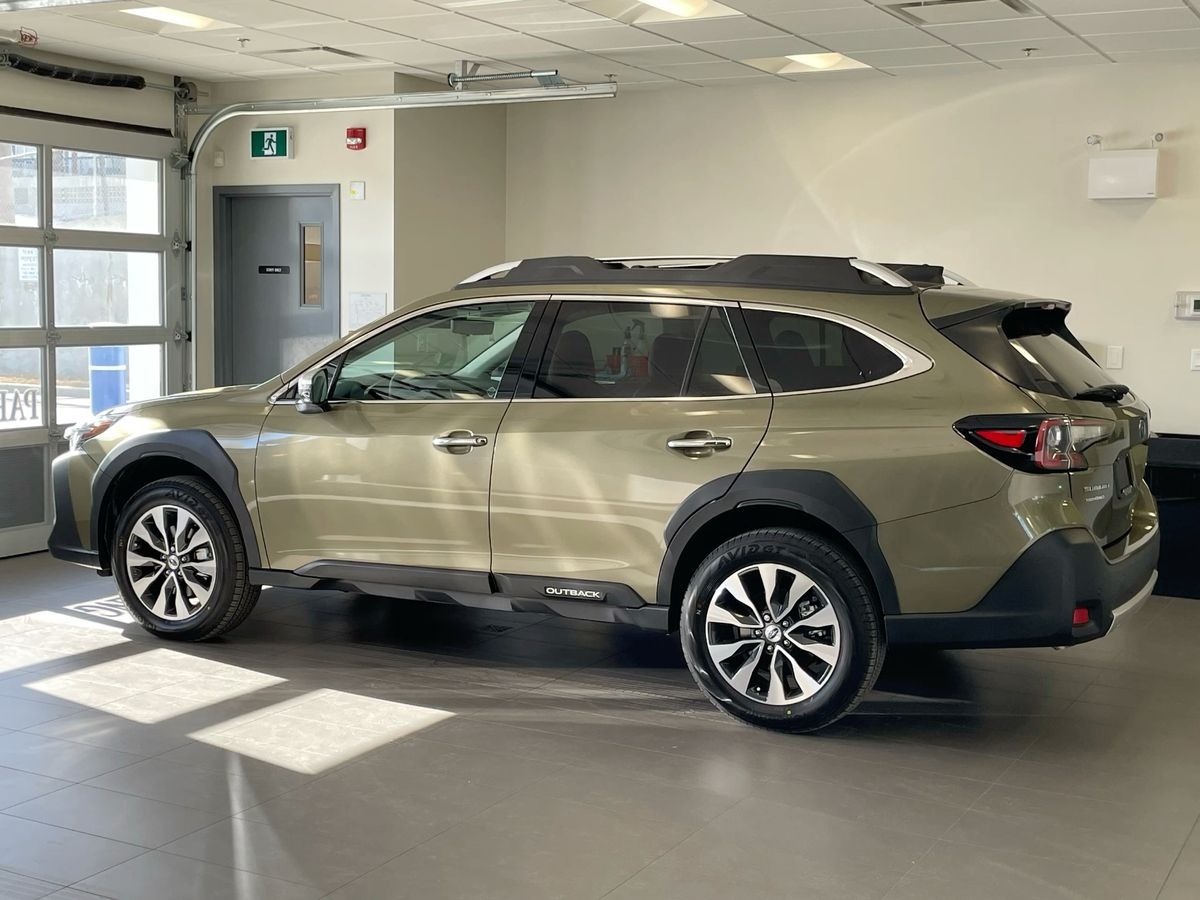
2. Subaru Outback
The Subaru Outback is often dubbed the “adventurer’s station wagon,” and for good reason—it merges the handling and efficiency of a car with the ruggedness and space of an SUV. Designed for versatility, it shines particularly bright in conditions that would challenge a typical sedan or crossover.
Whether your cross-country route includes mountain passes, backcountry detours, or coastal highways, the Outback’s standard symmetrical all-wheel drive and elevated ground clearance provide surefooted confidence and adaptability. The powertrain options, including a reliable four-cylinder and a more robust turbocharged variant, allow drivers to choose between better mileage or better performance depending on their travel needs.
Comfort is an area where the Outback consistently overdelivers. Its cabin is quiet, and the interior layout emphasizes usability and space. Seating is ergonomic, and both rows offer ample legroom, even for tall passengers. This makes it an excellent choice for long-distance travelers who value comfort just as much as capability.
The rear seats fold flat to reveal a cavernous cargo area—large enough for luggage, camping gear, or whatever cross-country travel might demand. Subaru’s infotainment system is straightforward and user-friendly, and features like Apple CarPlay, Android Auto, and available navigation help keep drivers both entertained and oriented on long journeys through unfamiliar terrain.
Subaru’s commitment to safety and reliability adds another layer of assurance for long trips. The Outback comes equipped with EyeSight Driver Assist Technology, which includes adaptive cruise control, lane-keep assist, and pre-collision braking—features that reduce fatigue and increase safety over long hauls. Moreover, the Outback enjoys a loyal following due to its long-term durability and strong resale value.
It’s not uncommon to see these vehicles pushing 250,000 miles with only routine maintenance. For drivers who want a vehicle that can handle the pavement and the dirt without breaking a sweat, the Subaru Outback is one of the most versatile and dependable road trip companions on the market.
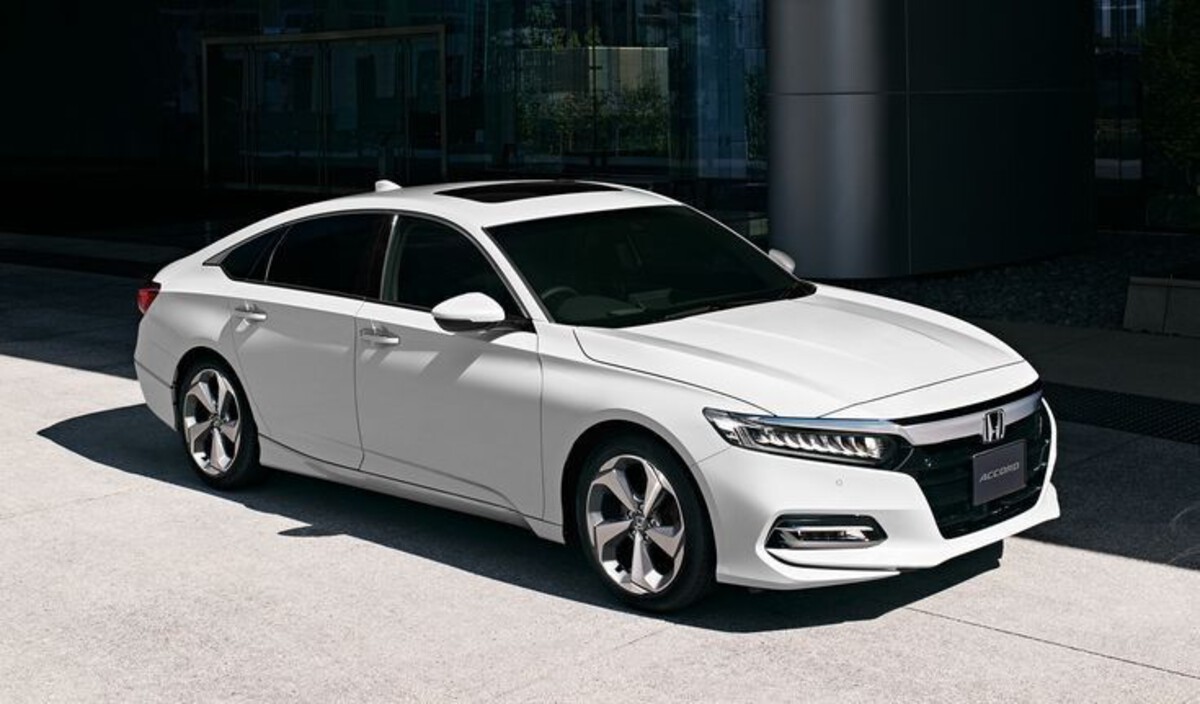
3. Honda Accord
The Honda Accord is one of the most well-rounded sedans ever built, and it has earned its reputation as a reliable, efficient, and comfortable long-distance cruiser. While many people might assume that road trips require an SUV, the Accord proves that a midsize sedan can be just as capable, if not more so, when engineered with precision and practicality.
Available in several powertrain configurations—including a punchy 2.0-liter turbo and a fuel-sipping hybrid—the Accord offers something for every kind of road tripper. The hybrid model, in particular, is a standout, delivering over 45 mpg on the highway, drastically reducing fuel costs on long drives.
Inside, the Accord impresses with a thoughtfully designed and exceptionally spacious cabin. Front seats are plush and supportive, which helps reduce fatigue during long drives. Rear-seat passengers enjoy generous legroom, and the trunk is surprisingly large for a sedan, offering more than enough space for suitcases, coolers, or camping gear.
The dashboard layout is clean and driver-focused, with an intuitive infotainment system that includes smartphone integration, a responsive touchscreen, and available premium audio. Noise insulation is also top-notch for the class, meaning that even at highway speeds, the ride remains quiet and serene. This all makes the Accord not just a vehicle you drive, but one you enjoy living in during a cross-country haul.
What truly sets the Accord apart for road trippers is its bulletproof reliability. Honda’s build quality ensures that this car holds up under the stress of high mileage better than most. It’s a car that can easily surpass 200,000 miles if maintained properly, and it rarely presents major mechanical issues.
Parts and service are readily available across the U.S., which means you’re never too far from help if you need it. Add in a comfortable ride, precise steering, and efficient use of space, and you have a sedan that rivals many crossovers in practicality while outclassing them in fuel economy and refinement. The Accord is proof that sometimes the best road trip vehicle is hiding in plain sight.
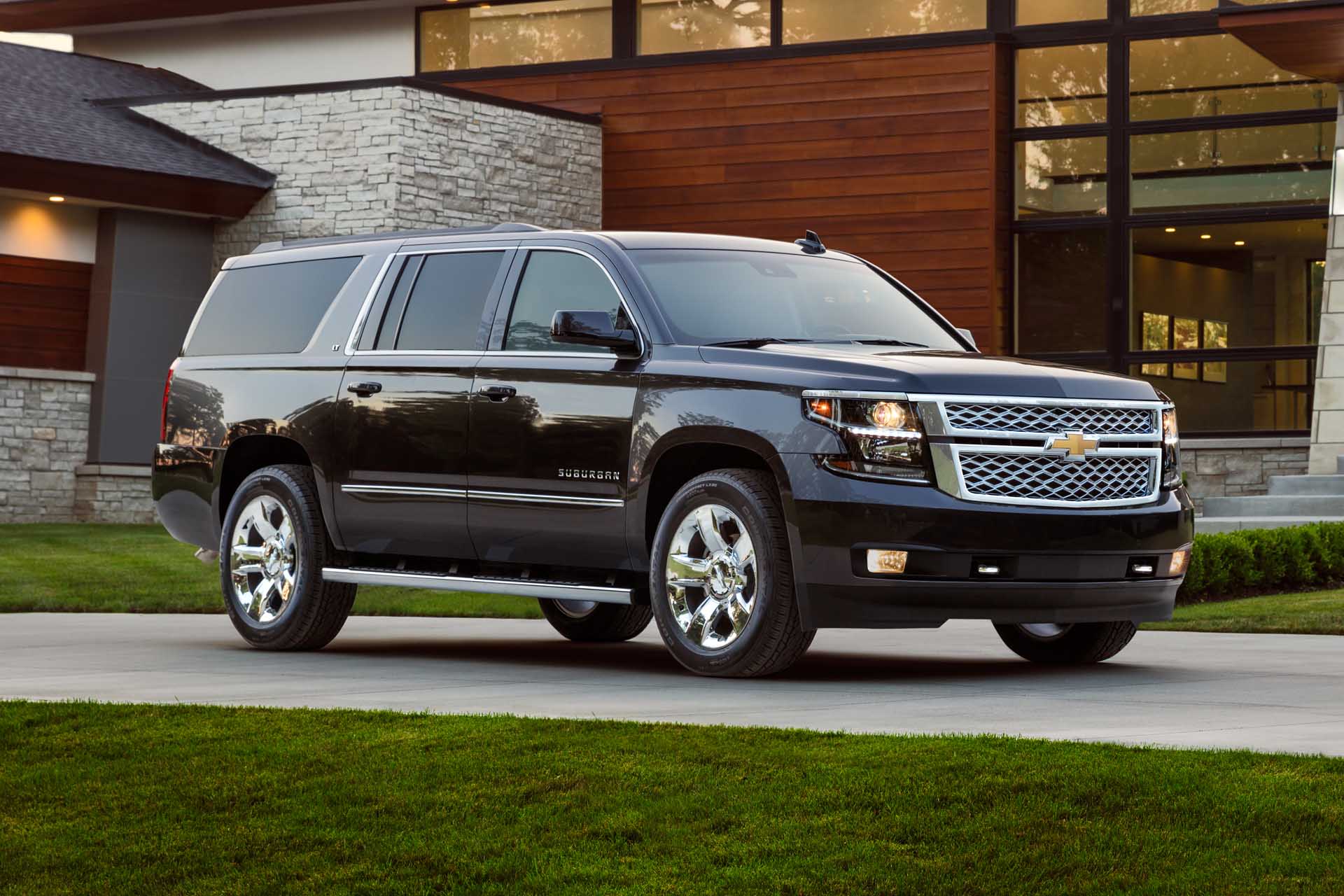
4. Chevrolet Suburban
The Chevrolet Suburban is a legend when it comes to American road trips, and for good reason. It’s one of the largest SUVs on the market, and with that size comes a level of versatility and durability that few other vehicles can match.
Built on a truck-based platform, the Suburban is engineered to haul people, gear, and trailers across thousands of miles without breaking a sweat. The powerful V8 engine options deliver strong performance, even when the vehicle is fully loaded, and its large fuel tank gives it an extended driving range, perfect for those long desert stretches with few fuel stops.
Where the Suburban really earns its stripes is in interior comfort and space. The cabin feels like a rolling living room, complete with soft seats, tri-zone climate control, and enough room to comfortably seat seven to eight adults while still having space left over for all their luggage.
Long trips are far less taxing when everyone has room to stretch out, and the high ride height offers commanding views of the road ahead. For families or groups, it even supports entertainment systems in the rear rows, which can be a lifesaver on multi-day drives. Plus, if you’re the kind of road tripper who likes to bring bikes, kayaks, or camping trailers, the Suburban’s impressive towing capacity means you won’t have to leave anything behind.
Despite its size, the Suburban is surprisingly composed on the highway. The suspension soaks up road imperfections, and recent models have improved significantly in terms of ride quality, technology, and safety. It comes with a suite of driver-assist features, such as adaptive cruise control and lane-keeping assist, which help reduce the mental load on long drives.
While fuel economy isn’t its strong suit, the trade-off is a vehicle that can truly do it all. For travelers who need space, strength, and a sense of comfort akin to a luxury RV without going fully off-grid, the Chevrolet Suburban stands tall as one of the most capable cross-country vehicles on the market.
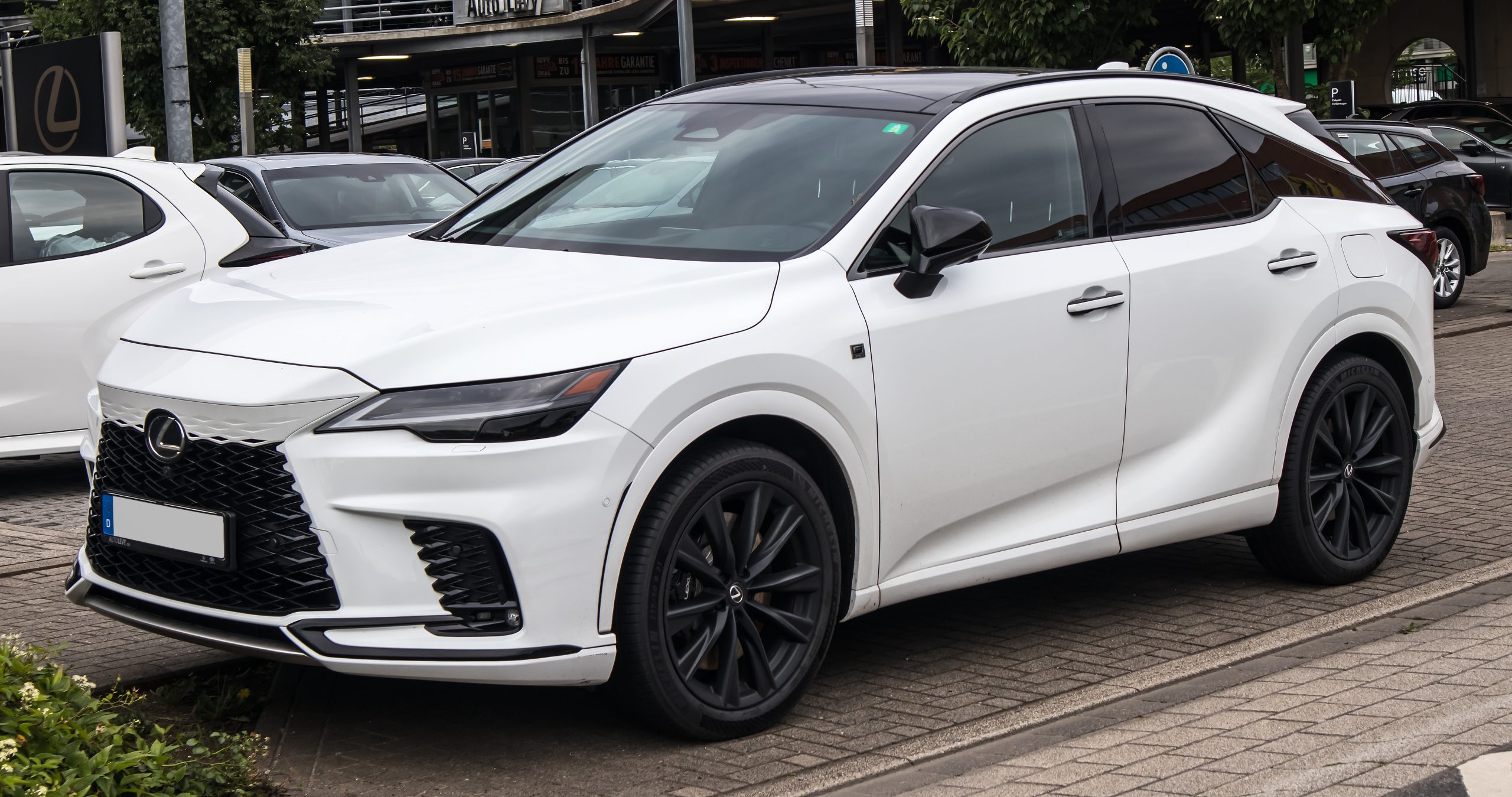
5. Lexus RX
For those who want to road trip in quiet, refined luxury without stepping into the stratosphere of exotic car prices, the Lexus RX is a dream machine. This midsize luxury crossover combines Toyota’s legendary reliability with Lexus’ commitment to comfort and cutting-edge tech.
It’s a vehicle that doesn’t just transport you across the country—it makes the journey feel indulgent. The ride quality is buttery smooth thanks to a well-tuned suspension and superb noise insulation. Whether you’re gliding down the interstate or navigating through mountainous switchbacks, the RX remains composed and poised, offering a truly premium driving experience.
The interior is where the Lexus RX really makes its mark for long-distance travel. The seats are sculpted and heavily cushioned, with available options for heating, ventilation, and even massage functions. The cabin materials are top-tier, from real wood accents to soft leather seating, creating a relaxing atmosphere for drivers and passengers alike. There’s ample space in both the front and rear, and the cargo area is generous for a luxury crossover.
The infotainment system—while not the simplest to use—offers navigation, smartphone connectivity, and voice controls that become increasingly valuable on the road. The optional Mark Levinson sound system provides crystal-clear audio, elevating the road trip playlist to concert-level clarity.
In terms of dependability, the Lexus RX benefits from Toyota’s rigorous engineering standards. Owners report exceptional reliability, often keeping these vehicles on the road well past 200,000 miles. Maintenance costs are reasonable for a luxury vehicle, and its wide dealer network ensures service is accessible almost anywhere.
The hybrid version of the RX also offers excellent fuel economy without sacrificing performance. All of this adds up to a road trip vehicle that is as dependable as it is enjoyable. For those who want to turn their cross-country drive into a rolling luxury retreat, the Lexus RX is one of the best options available.
5 Cars That Should Never Try

6. Smart Fortwo
The Smart Fortwo is perhaps one of the worst-suited vehicles for a cross-country road trip. Designed specifically for ultra-urban environments, its core strengths—tight turning radius, micro-compact dimensions, and ease of parking—become major drawbacks once you hit the open road. The car’s small three-cylinder engine simply isn’t cut out for sustained highway driving.
It lacks the power to maintain high speeds comfortably, especially when navigating steep inclines or dealing with headwinds. Acceleration is sluggish, and passing other vehicles can become a dangerous game of calculation. This engine limitation becomes even more pronounced when the vehicle is loaded with passengers or luggage—something the Fortwo wasn’t built to handle in the first place.
Comfort is another glaring issue. The cabin is small, cramped, and offers very little in the way of amenities or sound insulation. After an hour or two on the highway, the lack of legroom and limited seat adjustability can become intolerable. Road noise seeps through like water through a sieve, and the stiff suspension means you’ll feel every bump, crack, and pothole.
On long trips, where comfort can make or break the experience, the Fortwo simply doesn’t deliver. There’s minimal space for luggage, groceries, or gear, meaning you’d likely need to pack as if you were boarding a budget airline with a carry-on restriction. Add in the constant need for fuel stops due to a tiny gas tank, and the Fortwo’s practicality shrinks even further.
Reliability and service access are additional concerns. While some owners have had positive experiences in city settings, the Fortwo doesn’t have a solid track record for long-term durability under the stress of extended travel. Mechanical issues are more likely to arise simply because the car isn’t built to handle sustained, high-mileage use.
Additionally, finding parts or qualified mechanics for Smart vehicles can be a hassle outside of major metropolitan areas. Many towns and rural garages simply don’t stock the components or have the expertise to repair one efficiently. In short, the Smart Fortwo might be ideal for a short commute or navigating downtown congestion—but take it on a cross-country trip, and you’ll likely regret every mile after the first 100.
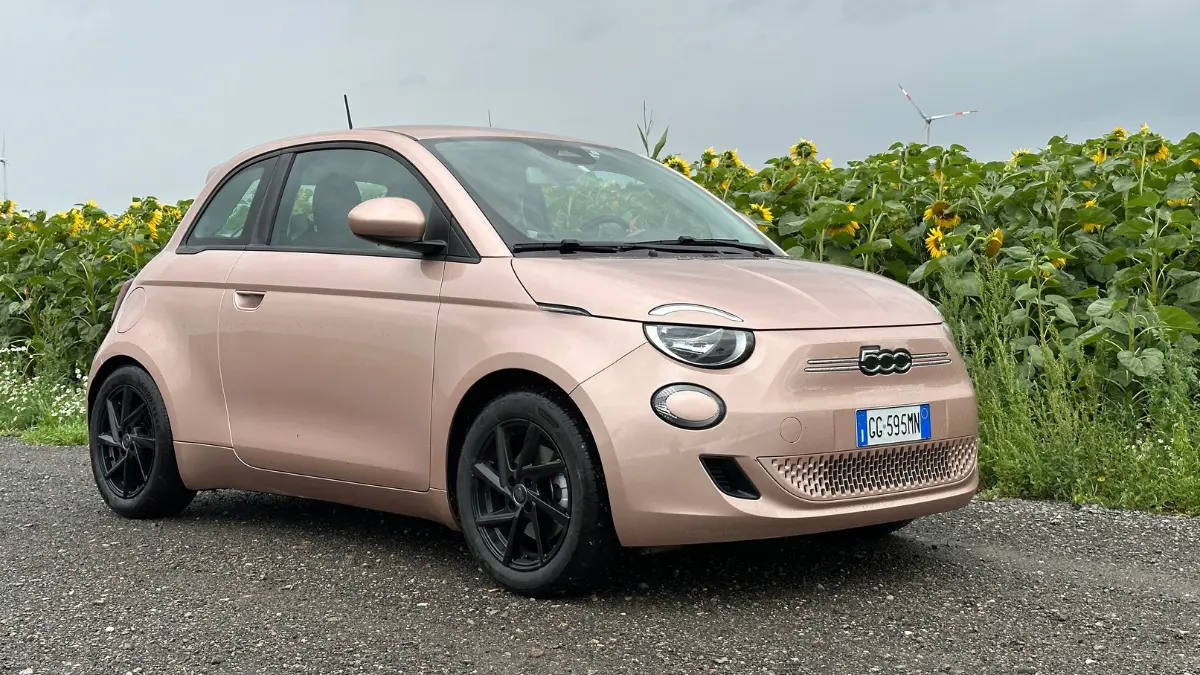
7. Fiat 500e
The Fiat 500e, the electric version of the iconic Fiat 500, is charming in design but completely impractical for cross-country travel. The most immediate and critical issue is range. With an EPA-rated range of around 84 miles per charge in its earlier versions (and only slightly better in recent ones), the 500e demands frequent charging stops—often every hour or two—making a long trip exhausting, tedious, and nearly unmanageable.
Unlike a hybrid or a long-range EV like the Tesla Model Y or a Hyundai Ioniq 5, the 500e simply wasn’t designed with highway infrastructure or road trippers in mind. You’ll find yourself constantly hunting for charging stations, which may be sparse or incompatible in rural or remote areas.
Even if the charging situation were more forgiving, the car’s size and ride dynamics make it a poor fit for extended journeys. The 500e is incredibly compact, which is great for zipping around cities but miserable for hours of freeway driving.
The cabin space is tight, particularly for taller drivers and passengers, and the storage space is laughably small—barely enough for a weekend duffel bag, let alone the needs of a cross-country trek. Ride quality also suffers at higher speeds, with the short wheelbase creating a choppy, unsettled experience. Wind and road noise are prominent, and the light, twitchy steering can be nerve-wracking during long, fast-paced drives.
Reliability is another area where the 500e underperforms. While electric powertrains generally require less maintenance, the Fiat brand has not enjoyed a stellar reputation for long-term durability, particularly in North America. Parts for the 500e can be hard to source, and many service centers—especially outside coastal urban areas—are unfamiliar with Fiat’s EV systems.
What might be a fun, eco-conscious choice for city driving becomes a logistical nightmare and a physically draining experience when stretched to the demands of a multi-state road trip. In the case of the Fiat 500e, form might win over function in a showroom, but function is what you desperately need on a cross-country highway, and this car just doesn’t have it.
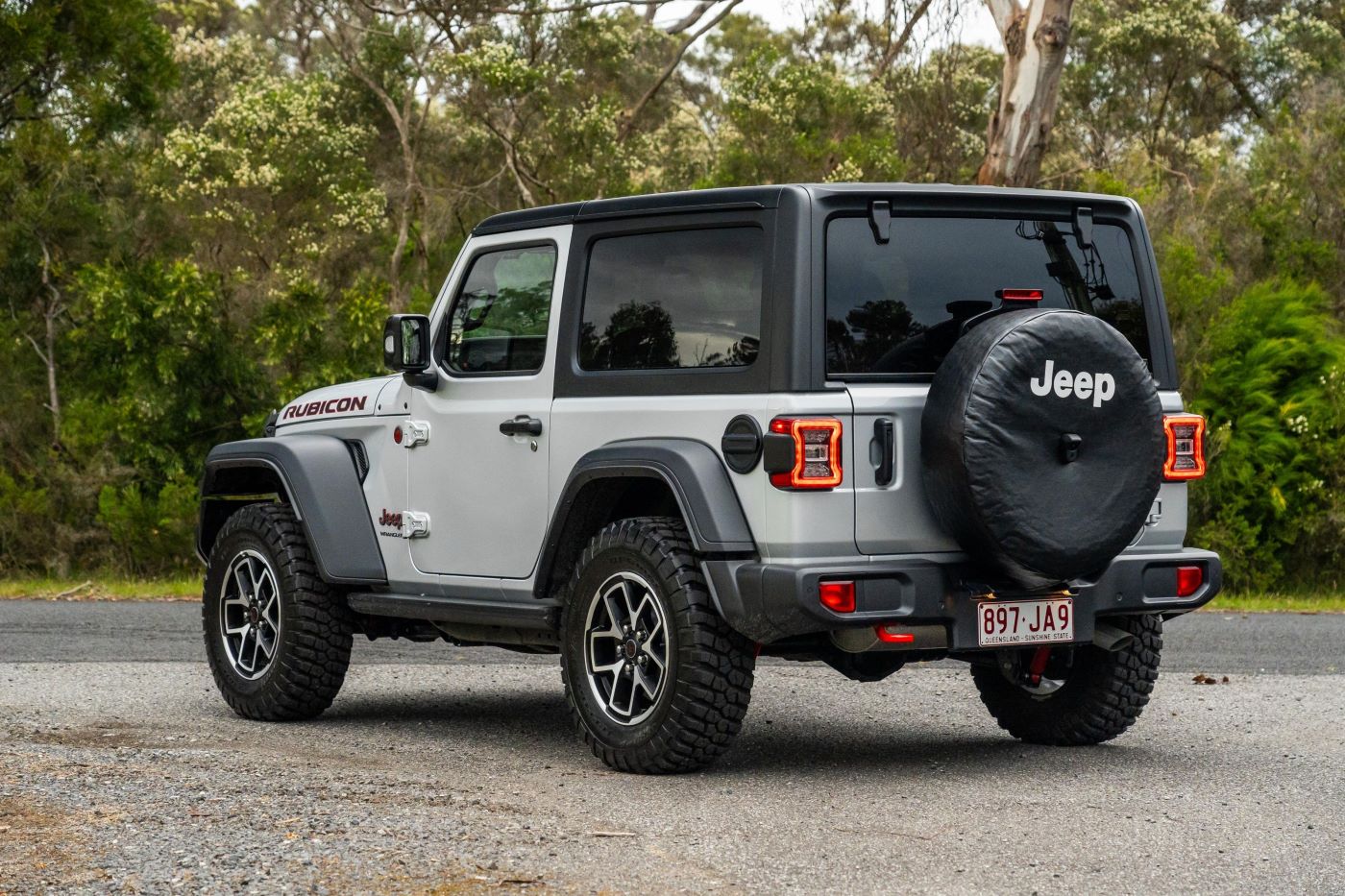
8. Jeep Wrangler (2-Door Base Model)
While the Jeep Wrangler is often associated with rugged adventures, it’s important to make a distinction between the off-road dream and the reality of long-distance highway travel, particularly in its base 2-door model. Designed for rock crawling, muddy trails, and short bursts of aggressive terrain traversal, the Wrangler is a beast off-road.
However, on the open highway, where most cross-country drives happen, it reveals significant shortcomings. The short wheelbase of the 2-door version makes the ride jittery and unstable at high speeds. It feels bouncy and unrefined, which can be downright exhausting during prolonged stints on interstate roads. You may find yourself fighting the steering wheel more than you should, especially in windy conditions or on less-than-perfect pavement.
Interior comfort is another serious drawback in this configuration. While the Wrangler has been updated over the years to offer more creature comforts, the base model still lags behind the competition in terms of refinement. Seats are upright and minimally padded, with limited adjustability.
The ride is noisy due to the boxy shape and removable roof panels, which allow significant wind and road noise to enter the cabin at highway speeds. Storage space is also tight, especially with two doors and a small cargo area. That rugged, open-air feeling you get crawling over boulders quickly becomes an annoyance when you’re halfway through Nebraska with 1,500 miles left to go.
Maintenance and fuel efficiency present further complications. The Wrangler is not known for being especially economical, and the fuel stops can start to add up, both in time and cost. Reliability is a mixed bag, with issues related to electronics, suspension, and drivetrain not uncommon, especially in older models.
And while Jeep’s widespread popularity means service is generally available, you may find yourself needing it more often than you’d like. All of this means that unless your road trip is 90% off-road trails and only 10% highways, the Jeep Wrangler 2-door base model is a fatiguing, inefficient, and ultimately uncomfortable way to cross a continent.
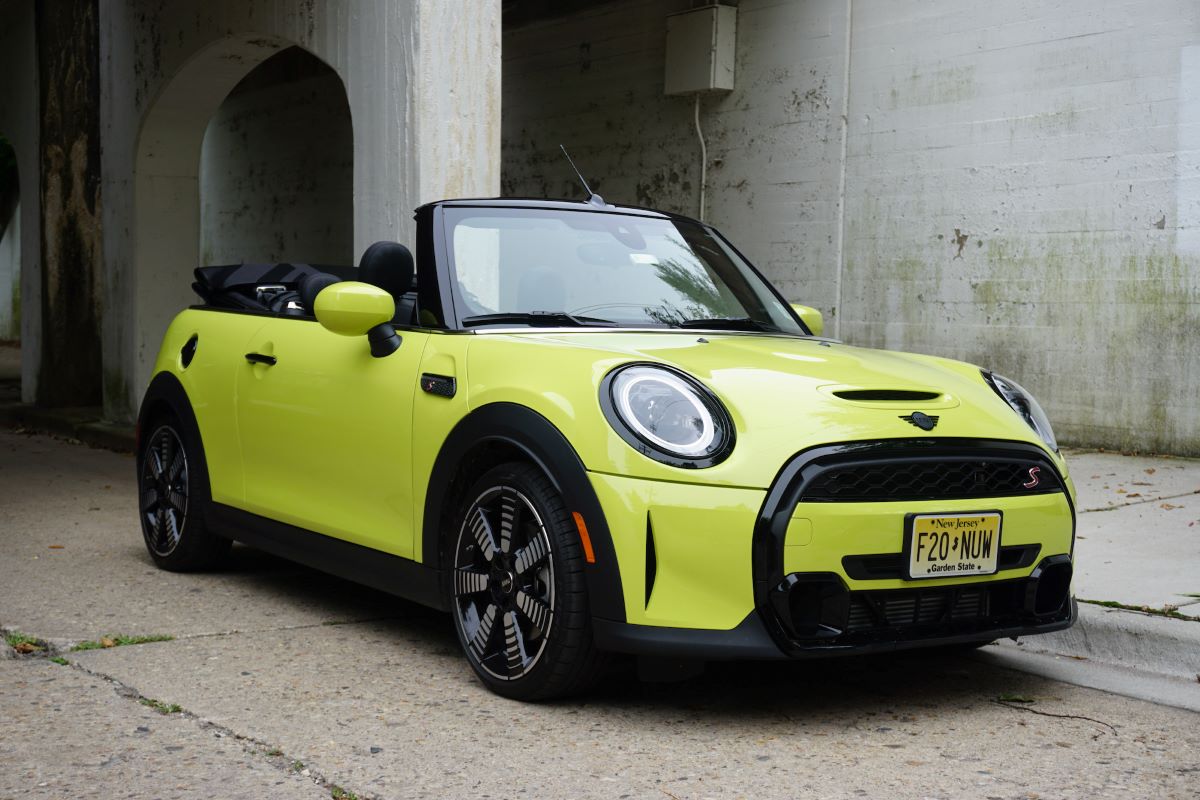
9. Mini Cooper Convertible
The Mini Cooper Convertible is undeniably stylish and fun in short bursts, but for a cross-country trip, it’s one of the worst vehicles you could pick. The first and most obvious limitation is space. Between its tiny rear seats, minimal trunk, and compact front cabin, there’s little room for luggage, gear, or even personal comfort.
This becomes a major issue on long trips where you need to pack more than just the essentials. Fold the top down and you’ll be dealing with even less trunk space, not to mention exposure to wind, sun, and road debris. What might be fun for a Sunday coastal drive turns into a sensory overload on the interstate.
Comfort and ride quality leave much to be desired as well. The Mini has a famously firm suspension, which is great for handling and sporty cornering, but disastrous for comfort over long distances. Every bump, crack, and ripple in the road is transmitted directly into the cabin, making long drives a physically demanding experience.
Combine that with tight seating, limited lumbar support, and a stiff clutch in manual models, and you’re in for a long, uncomfortable haul. The small wheelbase also results in a jittery ride, especially over uneven pavement or expansion joints on highways.
Reliability is another sticking point. While newer models have improved somewhat, the Mini Cooper—especially older convertibles—has had a spotty history when it comes to mechanical dependability. Issues with the turbocharger, transmission, and electrical systems are not uncommon. Parts can be expensive, and service is not always readily available in more rural or less affluent areas.
While you might enjoy the Mini’s personality and fun factor in a controlled, short-distance setting, stretching it over 3,000 miles of interstate travel exposes its flaws quickly. It’s a boutique car built for style and short drives, not the marathon endurance of a cross-country road trip.
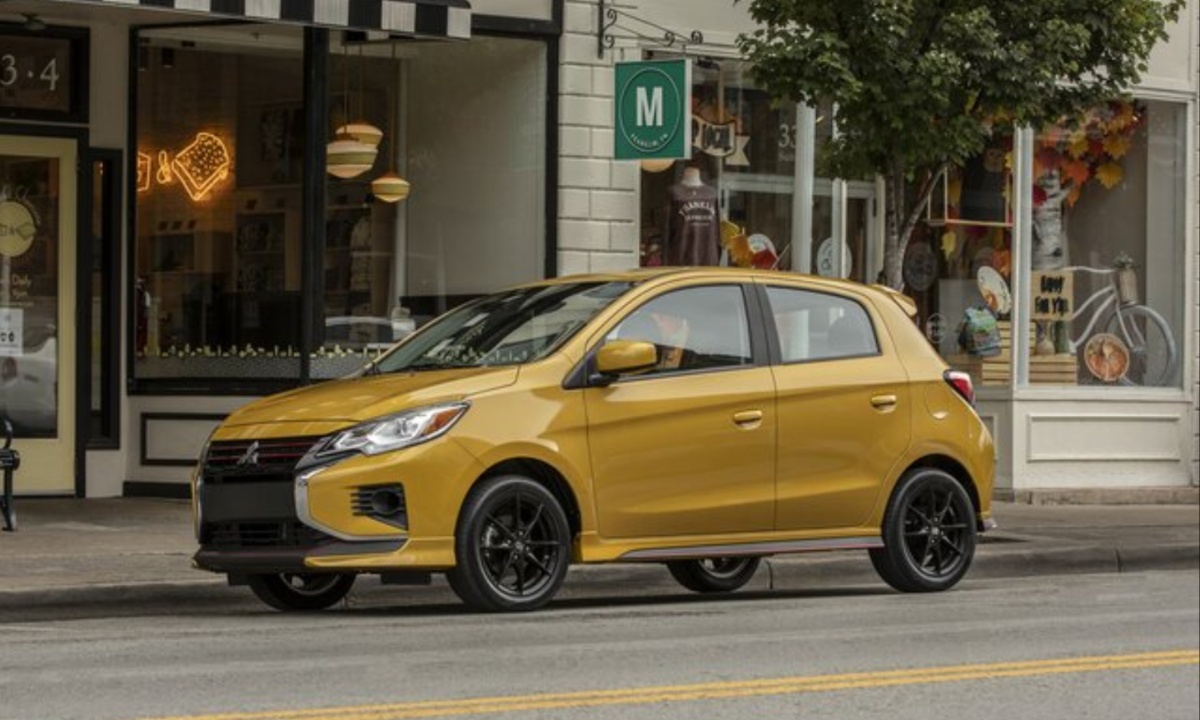
10. Mitsubishi Mirage
The Mitsubishi Mirage has long been touted as one of the cheapest new cars available, but its affordability comes at the cost of performance, comfort, and overall build quality—traits you can’t afford to skimp on during a cross-country journey. The Mirage’s three-cylinder engine is woefully underpowered for sustained highway driving.
It struggles to maintain speed on inclines and feels strained even under moderate acceleration. You’ll often find yourself in the far-right lane, holding your breath as semi-trucks whiz past. This lack of power can be frustrating, and in some cases, unsafe, particularly when you need to merge or overtake.
The cabin experience is equally underwhelming. Built to a price point, the interior features hard plastics, minimal soundproofing, and sparse creature comforts. Seats lack cushioning and support, becoming uncomfortable within the first hour. The small wheelbase and poor suspension tuning result in a rough, noisy ride, and even minor road imperfections can send vibrations through the cabin.
It’s a vehicle designed for short commutes or budget-conscious city dwellers, not for eight-hour driving shifts across the country. The storage space is also extremely limited, making it hard to bring more than a couple of small bags without sacrificing rear-seat usability.
On top of everything else, the Mirage’s reliability record is mixed at best. While it can be cheap to maintain in ideal conditions, the engine and transmission are known to be fragile when pushed hard over long distances. Breakdowns, while not guaranteed, are far more likely in a Mirage than in more robust economy cars like the Honda Fit or Toyota Yaris.
Its lightweight construction also makes it more susceptible to being pushed around by wind or passing vehicles, further eroding the feeling of safety during highway driving.
All told, the Mitsubishi Mirage is a poor choice for anyone considering a coast-to-coast drive. Its low upfront cost becomes irrelevant when you’re faced with a sore back, constant stress, and the very real risk of being stranded.
Also Read: Top 10 EV Features That Come in Useful in Daily Commute
A cross-country road trip represents more than just a long drive — it’s a journey that captures the spirit of freedom, exploration, and personal discovery. But the success of that journey depends heavily on what you drive.
In this article, we’ve looked at two very different types of vehicles: those that can rise to the occasion, supporting a smooth, safe, and enjoyable drive from coast to coast, and those that fall short under the strain of such a demanding adventure.
The five vehicles we’ve identified as road-trip-ready all share key characteristics that make them ideal companions for a long haul. These are cars and trucks with reputations for reliability and comfort, with spacious cabins that won’t leave you sore after hours behind the wheel.
They offer good-to-excellent fuel efficiency, reducing the frequency and cost of pit stops. They also tend to include safety features and infotainment systems that help reduce fatigue and keep passengers entertained. Most importantly, they’re vehicles designed with durability in mind—machines built not just to drive, but to endure.
The Toyota Highlander, Honda Accord, Subaru Outback, Ford F-150, and Volvo XC90 are all shining examples of vehicles that perform admirably in real-world travel scenarios. They come from brands that emphasize quality, and many have long-standing reputations for crossing six-digit mileage marks without breaking a sweat.
They make driving enjoyable, even when the novelty of the journey begins to wear off and the miles start to blend. With these cars, it’s not just about making it to your destination—it’s about enjoying the road along the way.
On the other side, we considered five vehicles that, while appealing in their own right, just aren’t built for long-distance travel. These cars may be fun for a weekend spin, great in a dense urban setting, or even thrilling in short bursts, but extended highway travel exposes their weaknesses.
Poor ergonomics, limited cargo capacity, subpar reliability, or unrefined ride quality can quickly become unbearable when stretched over thousands of miles. And while no car is truly “bad” if it’s used for the right purpose, forcing a city car or a temperamental performance vehicle into a cross-country role is often a recipe for frustration.
At the end of the day, choosing the right car for a cross-country drive is about understanding your priorities and matching them with the strengths of your vehicle. Do you need room for gear? Space for family?
Reliability in remote areas? Or simply a vehicle that won’t wear you down after eight hours behind the wheel? Whatever your needs, there’s a car out there that’s built for the challenge—and one that’s probably better off parked.
In a world where convenience, comfort, and peace of mind are increasingly non-negotiable, selecting the right car could be the most important decision you make before your wheels even start rolling. With the right vehicle, the open road isn’t just a path to your next destination—it’s part of the adventure itself.

